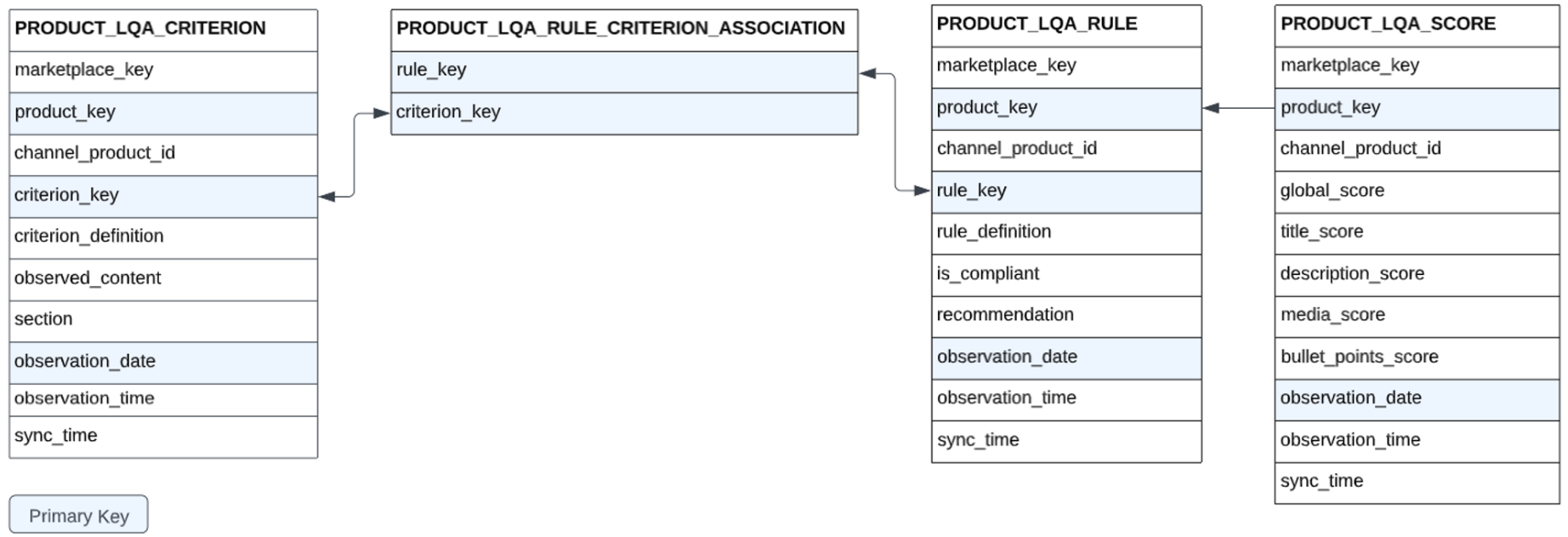
Optimize your Amazon product listings with data-driven insights.
What is this data useful for?
Which products need urgent optimization to improve conversions?
→ Pinpoints underperforming listings by scoring critical elements (titles, bullets, images) tied to purchase behavior.
Where are my listings failing Amazon requirements?
→ Identifies policy violations (e.g., prohibited keywords, missing media) that risk suppression or penalties.
How do my listings compare to competitors' quality?
→ Benchmarks your LQS against competitors to prioritize investments in high-opportunity products.
| Term | Definition |
|---|---|
| Criteria | Measurable listing elements (title length, image count, etc.) |
| Rules | Amazon's official listing guidelines we evaluate against |
| LQS | Listing Quality Score (0-100) of your listing quality |
All data lives in the PRODUCT schema:
| Table | Contents | Refresh | Key Fields |
|---|---|---|---|
PRODUCT_LQA_CRITERION |
Raw listing metrics | Daily | product_key, criterion_key, date |
PRODUCT_LQA_RULE |
Rule compliance status | Daily | product_key, rule_key, date |
PRODUCT_LQA_SCORE |
Calculated quality scores | Daily | product_key, date |
PRODUCT_LQA_RULE_CRITERION_ASSOCIATION |
Rule-criteria mapping | Daily | rule_key, criterion_key |
